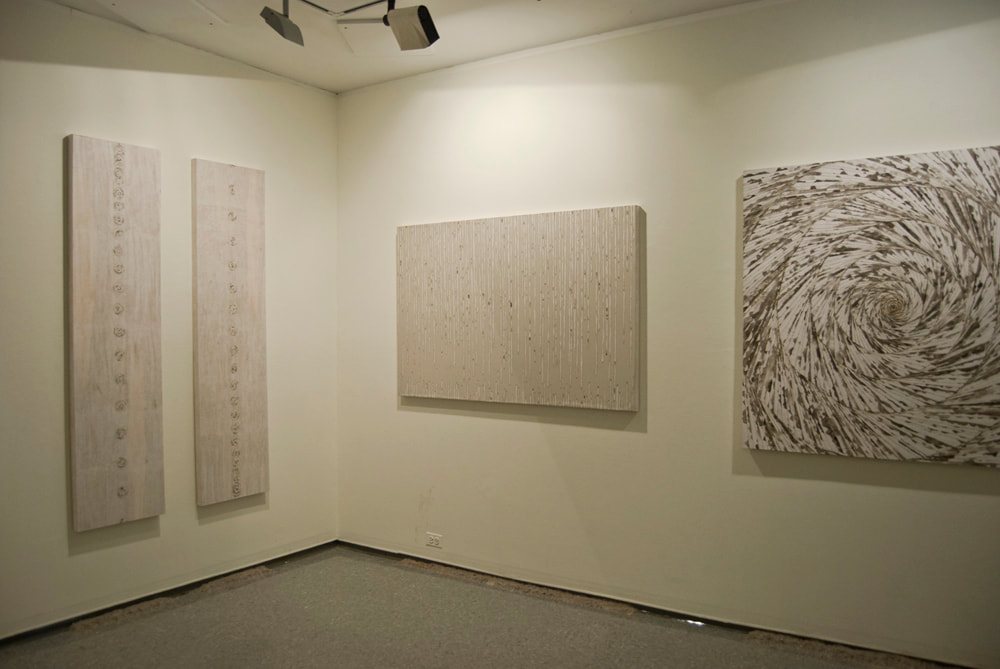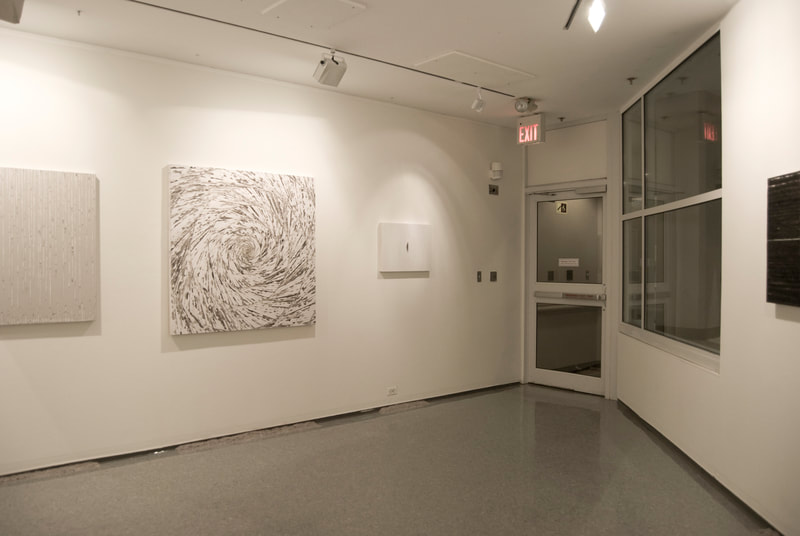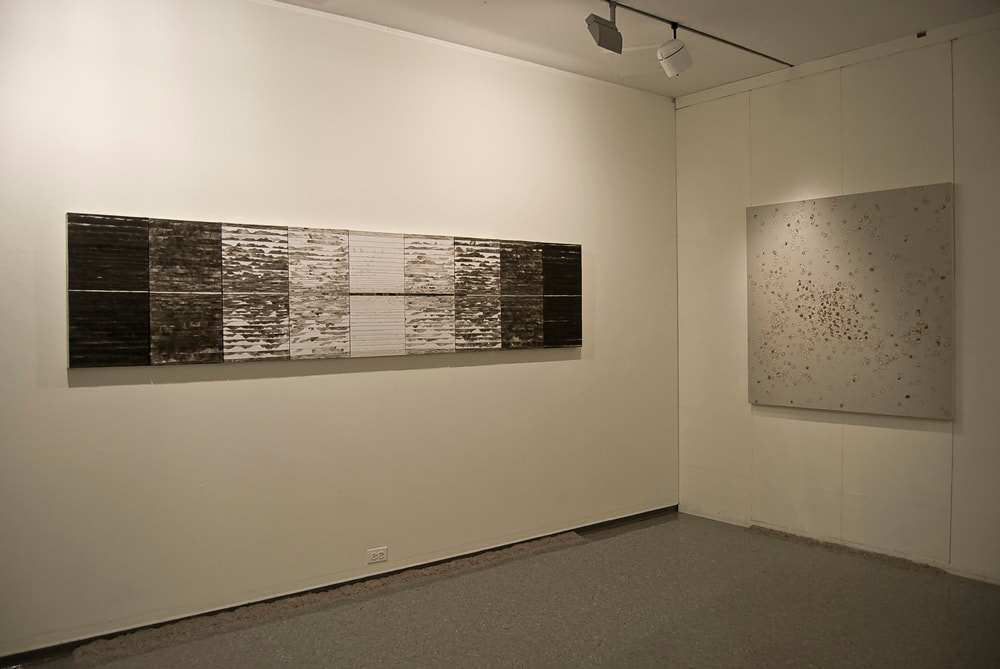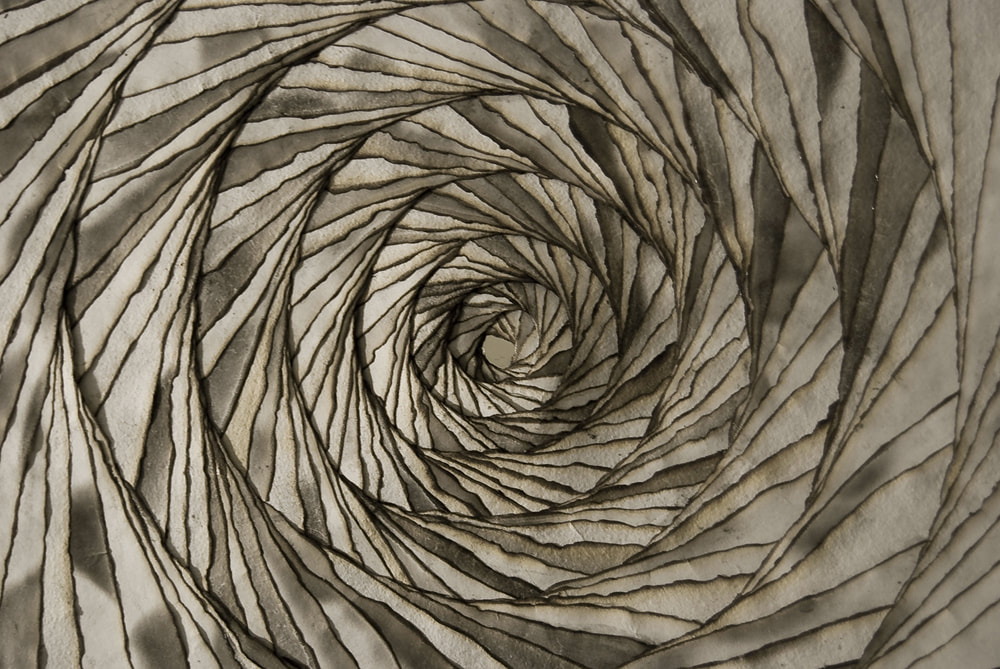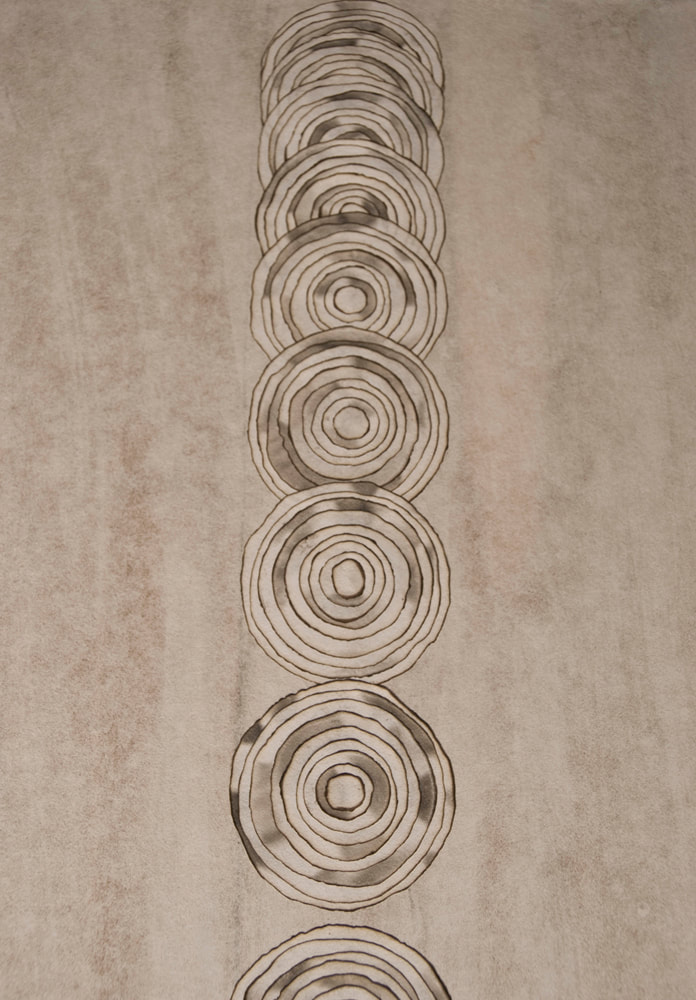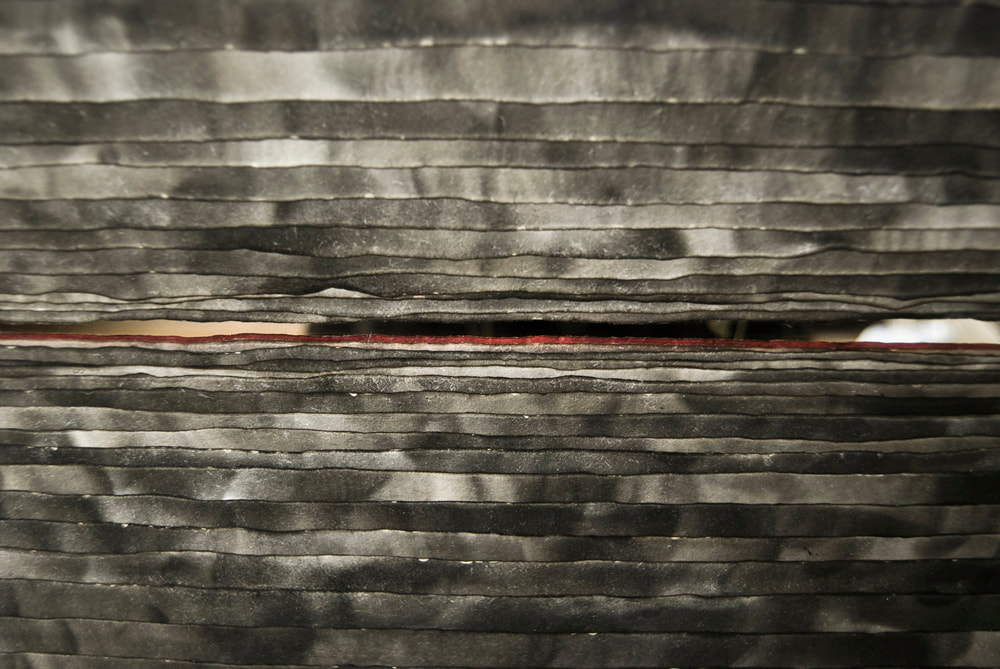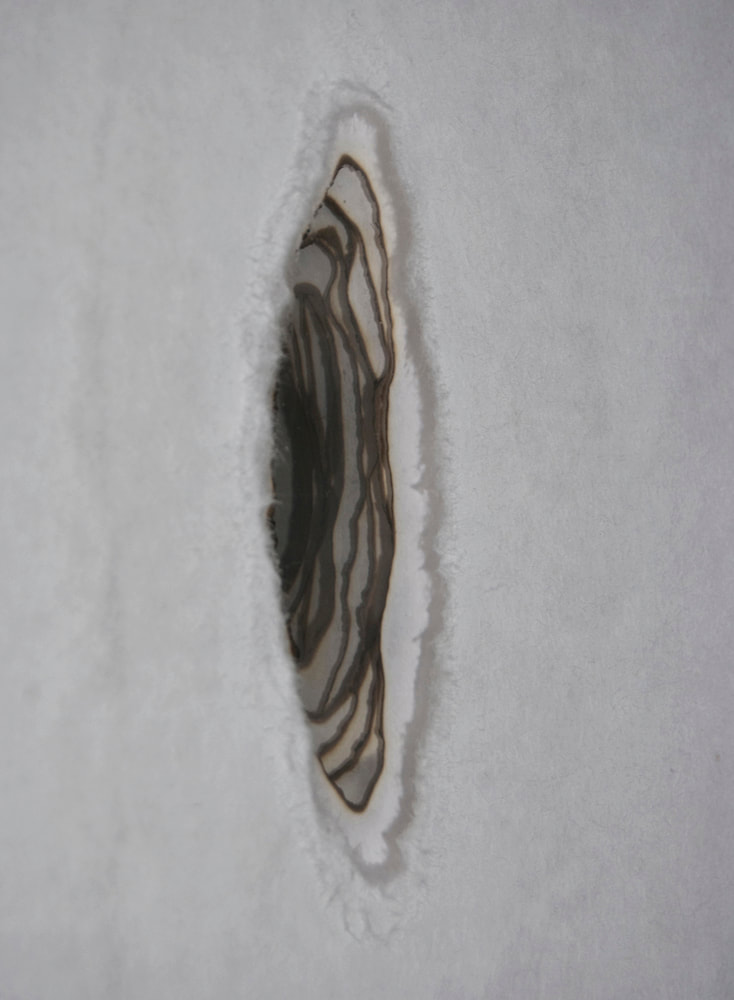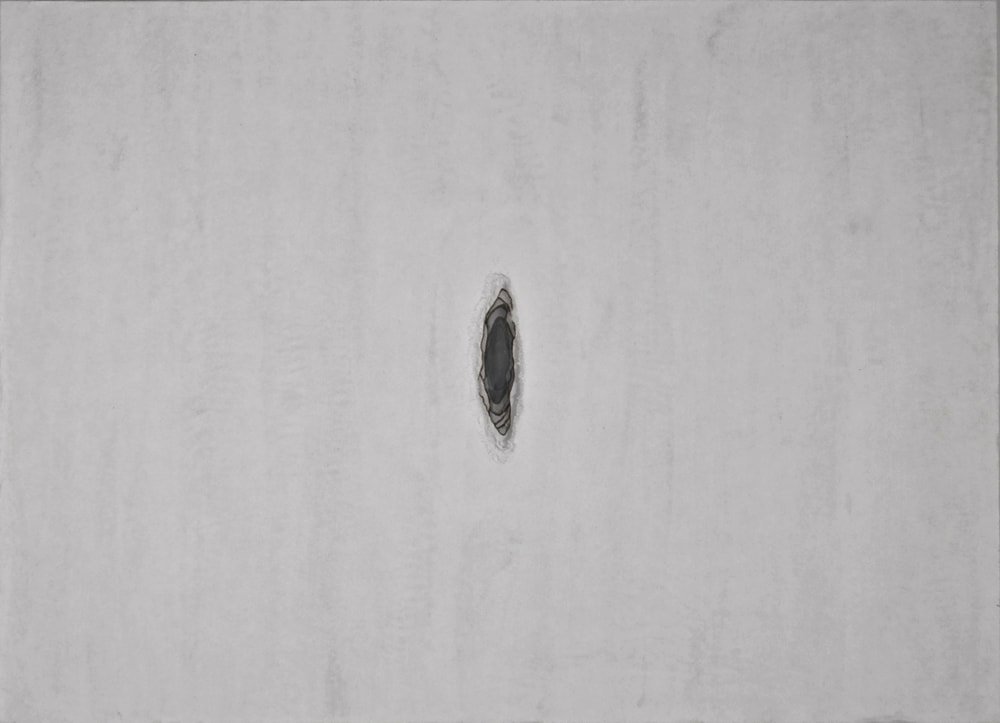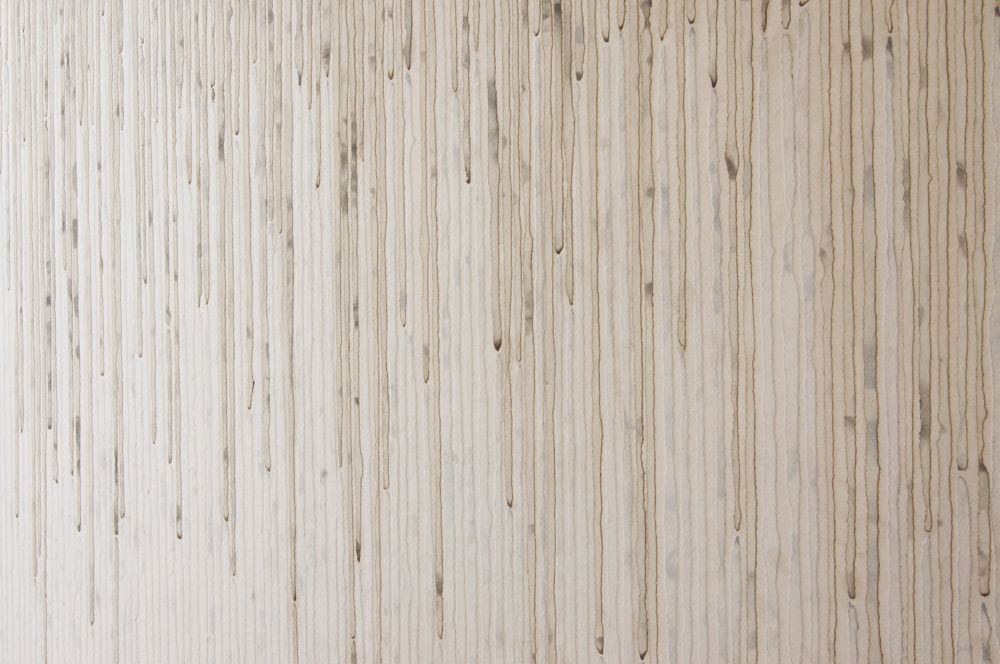SIMPLE HARMONIC MOTION (2010)
The 17th century Japanese poet Matsuo Basho once said, “the haiku that reveals seventy to eighty percent of its subject is good. Those that reveal fifty to sixty percent, we never tire of.” This quote concisely conveys an important aspect of Zen and Taoist aesthetics – to create forms that follow the spirit, to achieve positive emptiness that allows for freedom of imagination and enchantment.
Every piece in Simple Harmonic Motion is a subtle visual integration of several scenes or movements: the water dripping from the terra cotta roof of a temple, the horizon widening before sunrise, light trembling, waves weaving, the erotic, the reserved, the almost touching…
Junichiro Tanizaki, a modern Japanese writer, wrote in his personal essay In Praise of Shadows that "while the Western paper is usually seen as something to be used, the texture of Japanese and Chinese paper gives us a certain feeling of warmth, of calm and repose. Instead of bouncing away the light, the paper seems to take in the light, envelop it gently, like the soft surface of a first snowfall. It gives off no sound when it is crumpled or folded; it is quiet and pliant to the touch as the leaf of a tree." This comment brings our attention to the aesthetics in the most mundane objects.
Each slice of paper is burned by fire, but under the control of water – a harmonization of the masculine and the feminine elements of nature. The arrangement highlights the chaos of burn marks, as well as the obsessive control of the artist – two opposite choreographies. It celebrates both the rawness of nature and the orderliness of the mind – the intuitive and the analytical – while these two qualities balance each other.
Repetition dominates the process of making these pieces: the repetition of drawing dots and lines on paper with water, burning the paper with fire, watching the fire tracing the water marks, and seeing the water evaporating into the air. Repeating – until each moment becomes a meditation that leads to a newer realm of delight – as ephemeral as the second when the fire sparks at the edge of water, but as perpetual as a simple harmonic motion.
The idea of this project first stroke me during my visit to Woodland Cemetery outside of Stockholm, on a snowy morning in early spring. Ambling in the pine forest, my body seemed to have dissolved among the extreme density and verticality of Nordic pine trees, their shadows, streams of light that filtered through them, and the small tombs that are weaved into this pattern of nature and blended into the earth at the same time. The pine trees, my body, and the tombs seemed to have fused into a flux. The thoughts for this project developed while I was reading the poems of Matsuo Basho, and at the mean time, inspired by the ancient Chinese art of burning, which is not only a ritual activity, but more importantly, a way of sending the spirit back to Nature, a worship of the Moment, and a humble celebration of life.
-Yi Dai, April 2010
The 17th century Japanese poet Matsuo Basho once said, “the haiku that reveals seventy to eighty percent of its subject is good. Those that reveal fifty to sixty percent, we never tire of.” This quote concisely conveys an important aspect of Zen and Taoist aesthetics – to create forms that follow the spirit, to achieve positive emptiness that allows for freedom of imagination and enchantment.
Every piece in Simple Harmonic Motion is a subtle visual integration of several scenes or movements: the water dripping from the terra cotta roof of a temple, the horizon widening before sunrise, light trembling, waves weaving, the erotic, the reserved, the almost touching…
Junichiro Tanizaki, a modern Japanese writer, wrote in his personal essay In Praise of Shadows that "while the Western paper is usually seen as something to be used, the texture of Japanese and Chinese paper gives us a certain feeling of warmth, of calm and repose. Instead of bouncing away the light, the paper seems to take in the light, envelop it gently, like the soft surface of a first snowfall. It gives off no sound when it is crumpled or folded; it is quiet and pliant to the touch as the leaf of a tree." This comment brings our attention to the aesthetics in the most mundane objects.
Each slice of paper is burned by fire, but under the control of water – a harmonization of the masculine and the feminine elements of nature. The arrangement highlights the chaos of burn marks, as well as the obsessive control of the artist – two opposite choreographies. It celebrates both the rawness of nature and the orderliness of the mind – the intuitive and the analytical – while these two qualities balance each other.
Repetition dominates the process of making these pieces: the repetition of drawing dots and lines on paper with water, burning the paper with fire, watching the fire tracing the water marks, and seeing the water evaporating into the air. Repeating – until each moment becomes a meditation that leads to a newer realm of delight – as ephemeral as the second when the fire sparks at the edge of water, but as perpetual as a simple harmonic motion.
The idea of this project first stroke me during my visit to Woodland Cemetery outside of Stockholm, on a snowy morning in early spring. Ambling in the pine forest, my body seemed to have dissolved among the extreme density and verticality of Nordic pine trees, their shadows, streams of light that filtered through them, and the small tombs that are weaved into this pattern of nature and blended into the earth at the same time. The pine trees, my body, and the tombs seemed to have fused into a flux. The thoughts for this project developed while I was reading the poems of Matsuo Basho, and at the mean time, inspired by the ancient Chinese art of burning, which is not only a ritual activity, but more importantly, a way of sending the spirit back to Nature, a worship of the Moment, and a humble celebration of life.
-Yi Dai, April 2010
Works included in this show:
Works relevant to this show:
